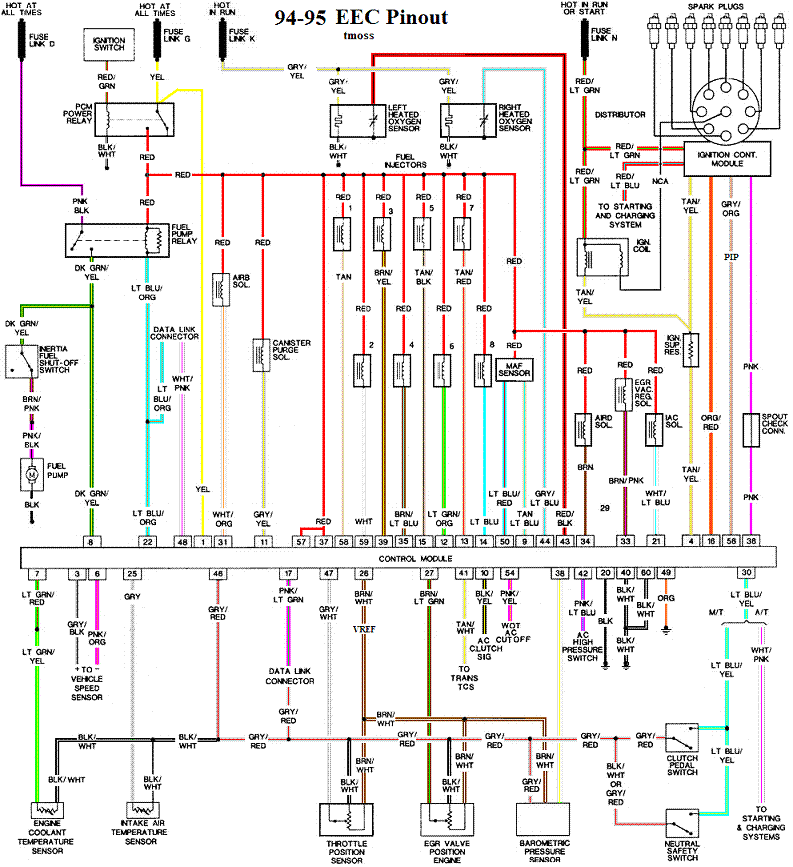- May 20, 2016
- 66
- 6
- 18
I've been tinkering with my fuel pressure over the last few weeks, ever since I installed a wideband. Car is an 88 5.0 with mass air conversion, vortech blower, cobra intake, edelbrock heads, 42 lb injectors and a brand new fuel tank/Walbro 255 pump. When I first got a view from the wideband, it seemed pretty lean. Idle was around stoich, but no matter what Rpm's and how hard I drive, seems to stay around stoich until decel. Car also had light popping in exhaust and intake occasionally and a small idle problem when cold. Realizing it is too lean to drive on the upper end of the rpm range, I've been slowly increasing fuel pressure over the course of the week. Car has an aeromotive apr.
by the time I had base pressure with vac removed up to about 44-45 from its original setting of 39, things felt generally better while driving, but wideband continued to read about the same in lower Rpm's while driving to and from work. This change was in small increments over the course of about a week. Once I decided the lower rpm driving felt better, I put it on a small highway acceleration pass to see what the wideband would show. I took up to about 3600 Rpm's in third gear and let off. Air/fuel never went richer than 14/1, which makes me uncomfortable still. It ran very strong and nothing felt weird, just the wide band's reading freaked me out. Figured I would need to start troubleshooting the issue and should just drive it home.
I got off the highway and made it to the first stop light, where I sat idling for a few minutes. Once it was green, I hit the gas... Just normal driving, and it spiked all the way rich at 10 to 1, then quickly flopped over to all the way lean at 18 to 1. The car sputtered for a second, then came back toward 14.7 to 1 slowly. As long as the car is continuing to move, it stays around stoich. But every time I come to a complete stop and have to hit the gas, this situation happens again. Doesn't matter if engine is cold or not.
Fuel pressure gauge on the Schrader valve shows pressure that changes as expected when vac line removed and replaced on the regulator. Thought maybe the was an injector issue, but cylinder balance test reads 9, which I believe means no problem detected. Pulled the plugs and they are all pretty uniform. None are wet or oily. Car has really cheap Chinese green top knockoff injectors. Could there be a problem there? What are signs of a problematic regulator? I don't detect gas in its vacuum line.
by the time I had base pressure with vac removed up to about 44-45 from its original setting of 39, things felt generally better while driving, but wideband continued to read about the same in lower Rpm's while driving to and from work. This change was in small increments over the course of about a week. Once I decided the lower rpm driving felt better, I put it on a small highway acceleration pass to see what the wideband would show. I took up to about 3600 Rpm's in third gear and let off. Air/fuel never went richer than 14/1, which makes me uncomfortable still. It ran very strong and nothing felt weird, just the wide band's reading freaked me out. Figured I would need to start troubleshooting the issue and should just drive it home.
I got off the highway and made it to the first stop light, where I sat idling for a few minutes. Once it was green, I hit the gas... Just normal driving, and it spiked all the way rich at 10 to 1, then quickly flopped over to all the way lean at 18 to 1. The car sputtered for a second, then came back toward 14.7 to 1 slowly. As long as the car is continuing to move, it stays around stoich. But every time I come to a complete stop and have to hit the gas, this situation happens again. Doesn't matter if engine is cold or not.
Fuel pressure gauge on the Schrader valve shows pressure that changes as expected when vac line removed and replaced on the regulator. Thought maybe the was an injector issue, but cylinder balance test reads 9, which I believe means no problem detected. Pulled the plugs and they are all pretty uniform. None are wet or oily. Car has really cheap Chinese green top knockoff injectors. Could there be a problem there? What are signs of a problematic regulator? I don't detect gas in its vacuum line.



